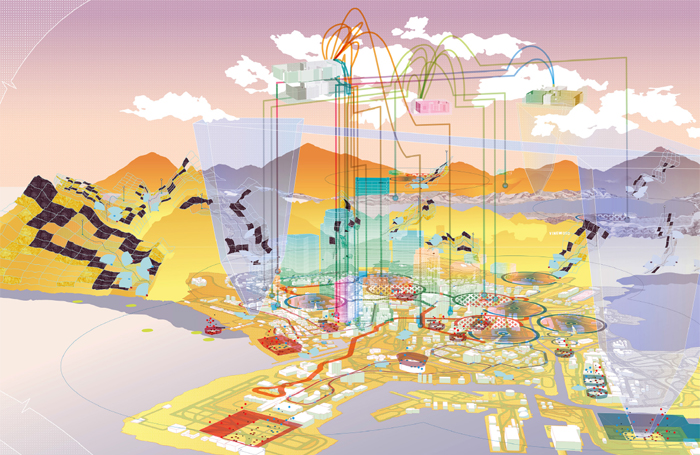A Machine For Playing In: Exploring the videogame as a medium for architectural agency.
Dr. Luke Pearson, The Bartlett School of Architecture, University College London
Awards RIBA President's Awards for Research 2018
Category Design & Technical

Millions regularly dive into the virtual worlds of videogames, exploring fictional spaces through controllers and screens. They occupy environments structured by both rules and fiction, ‘half-real’ conditions according to Danish games theorist Jesper Juul.
Yet scholarship into the connections between game spaces and architectural design is relatively limited. This research explores the reciprocal relationship between architecture and videogame worlds by first establishing how videogame spaces work as architectural constructions.
I then examine how games may act as media of architectural representation, identifying the unique properties in their structure that both references and extends prior media forms.
This research utilises three main approaches. Firstly, I use traditional architectural tools of analysis such as drawings, models, cartographic studies and critical writing to understand how game spaces function. This produces two projects, one using cheat codes to ‘prise apart’ games to analyse their spatial construction, and one comparing the fictional city of Los Santos, underpinning Grand Theft Auto V, to Los Angeles upon which it is based.
My second approach is to develop videogames myself and explore how their aesthetic form communicates architecture differently from other design media. I focus on the London Developers Toolkit, a satirical game I designed based around luxury developments in London, which communicates architectural messages to the player through being played.
The third approach in the paper discusses applying game principles into design projects for architecture with ostensibly real sites and programmes. I focus on a project, Tokyo Backup City, developing an urban design proposal through analysis of Japanese arcades, questioning how game technologies might be used to create playful public realms.
This research constitutes an original design-led exploration of the potential game technologies offer architecture, suggesting they can engage wide new audiences with the discipline and offer radical new ways to represent or even realise architectural projects.






